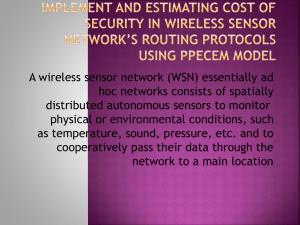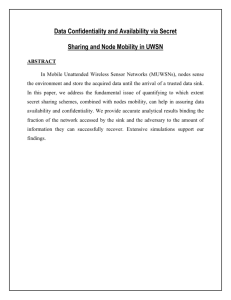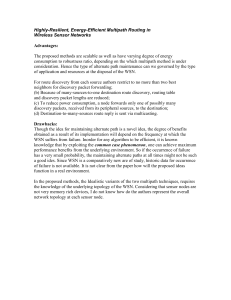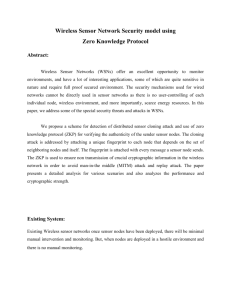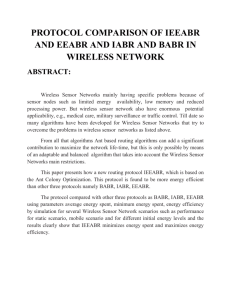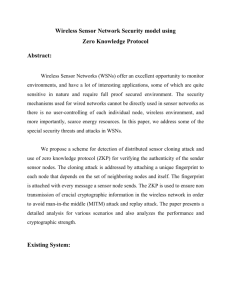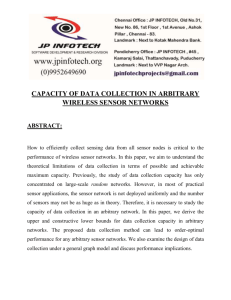Sensor Network Protocol Stack & Routing Protocols Lecture
advertisement
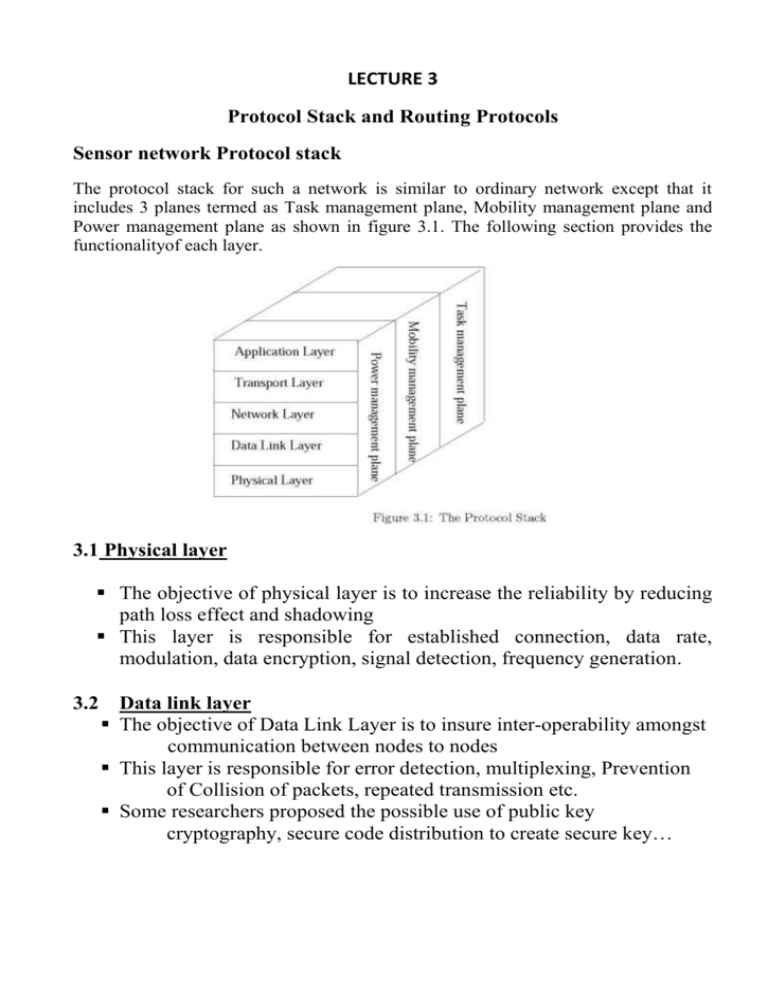
LECTURE 3 Protocol Stack and Routing Protocols Sensor network Protocol stack The protocol stack for such a network is similar to ordinary network except that it includes 3 planes termed as Task management plane, Mobility management plane and Power management plane as shown in figure 3.1. The following section provides the functionalityof each layer. 3.1 Physical layer The objective of physical layer is to increase the reliability by reducing path loss effect and shadowing This layer is responsible for established connection, data rate, modulation, data encryption, signal detection, frequency generation. 3.2 Data link layer The objective of Data Link Layer is to insure inter-operability amongst communication between nodes to nodes This layer is responsible for error detection, multiplexing, Prevention of Collision of packets, repeated transmission etc. Some researchers proposed the possible use of public key cryptography, secure code distribution to create secure key… 3.3Network Layer The objective of Network layer is to find best path for efficient routing mechanism This layer is responsible for routing the data from node to node, node to sink, node to base station WSN use ID based protocols and data centric protocols for routing mechanism In WSN, each node in the network acts as a router, so as to create secure routing protocol Encryption and decryption techniques are used for secure routing 3.4 Transport layer The objective of Transport Layer is to establish communication for external networks i.e. sensor network connected to the internet This is most challenging issue in wireless sensor networks ((Basically the connection between the sink and the central authority may be either TCP/UDP but the communication between the sensor nodes to the sink and among the sensor nodesonly UDP can be used. So in Sensor networks the communication is not end-to-end andso they are not based on Global addressing as IP addresses in Internet. Basically they areidentified by using attribute-based naming to address the destinations for data packets)). 3.5 Application Layer The following are the various application layer protocols that can be used in Sensor nodes Sensor Management Protocol(SMP) Task Assignment and Data Advertisement Protocol(TADAP) Sender Query and Data Dissemination Protocol(SQDDP) Sensor Management Protocol(SMP) This application protocol is used by the System Administrators to interact with the SensorNetworks. Since sensor networks don't have Global Identification, they can be accessedusing attribute-based naming and location addressing which are used for doing the followingtasks like Moving Sensor nodes, Turning Sensor nodes on and off, Authenticationand Security in data communications and many more. Task Assignment and Data Advertisement Protocol(TADAP) Most important activity in Sensor networks is how interest can be sent to the nodes or subset of nodes or to the whole network. One way is to inform the nodes that i have data and wait for response from the interested node. Another way is to send our interests to the user and let the user query at his interest. Sender Query and Data Dissemination Protocol(SQDDP) SQDDP basically provides interfaces for users to query the network and to receive the replies from the network. Queries will not be towards a particular node but location based or attribute based.

